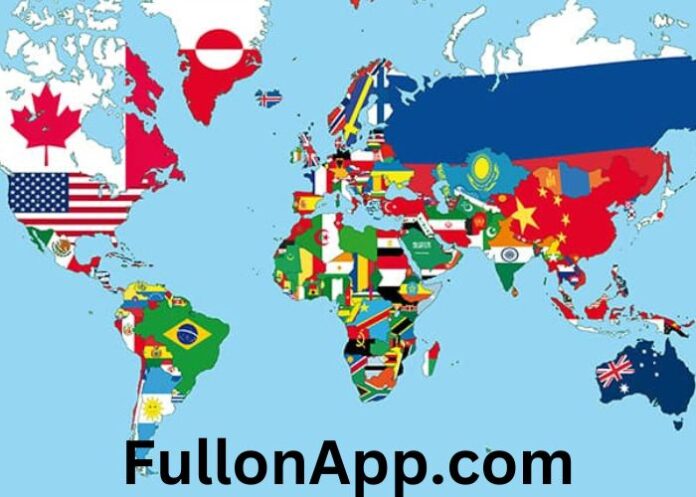As a kid, you probably learned that there are seven continents in the world: Africa, Asia, North America, South America, Antarctica, and Europe. But that’s not the whole picture.
Continents make up most-but not all-of Earth’s land surface, and the positions of continents are constantly changing due to shifts in tectonic plates.
Asia
Continents are the large landmasses of the Earth that have distinctive characteristics, including great mountain ranges, vast plains, and complex river systems. They are also home to many different animals and plants. Many continents are surrounded by oceans. All of the continents share a common geological history. Continents were shaped by glaciers and volcanoes, as well as by the movements of huge seas. Continents are also shaped by the weather, with varying temperatures and climates.
There are seven continents in the world: Australia, Asia, Africa, Europe, North America, South America, and Antarctica. Scientists believe that, at one time in the past, all of the world’s continents were joined together in a single supercontinent called Pangaea.
All of the continents have unique cultures and traditions. They are also home to some of the largest countries in the world, such as China and India. Many of the continents have diverse landscapes, from arid deserts to dense forests. They are also home to great natural wonders, such as the Great Wall and the Himalayas.
Using Twinkl’s world map resources is a fun way to help children learn about the continents. These maps include a list of the world’s continents and their names, as well as information about their sizes and shapes. They are also a great tool to use when learning about the countries of the world. These maps can be used in conjunction with other Twinkl teaching wikis, such as our Ocean Wiki.
Africa
Although Africa is best known for its savannas and the Sahara desert, it is also home to mountain ranges, rainforests, wetlands, shrublands, a mix of oceans and rivers (including the longest river in the world, the Nile), and barrier islands. It also has great biodiversity and a long history of human civilization, including ancient Egypt and the Roman Empire.
Africa is often called the Cradle of Humankind because it is believed that humans evolved there. Today, the continent of Africa is home to 54 countries and has 16 percent of the world’s population.
Continents are large land masses that share common features, such as great mountain ranges and broad plains. All continents are bordered by oceans, which make up most of the Earth’s surface.
The rocks that form continents have been shaped by many different forces over time. Mountain building, erosion, and the build-up of sediment are just some of the changes. The slow movement of tectonic plates can also change continents’ positions. For example, parts of North America and Europe are moving away from each other by 2.5 centimeters (one inch) per year. If these forces continue, another supercontinent may eventually form.
Europe
Continents are large areas of land that share some of the same features. They have great mountain ranges, vast plains, and complex river systems. They also have oceans, which cover more than three-fourths of the Earth’s surface. Continents are home to millions of different species and to every person on the planet.
During the past 250 million years, forces called plate tectonics have separated the continents and pushed them apart. As the plates move, they can collide, causing earthquakes and volcanoes. This process is ongoing, and scientists believe that the continents will eventually rejoin.
Today, seven continents make up most of the Earth’s land. These are Asia, Africa, Europe, North America, South America, Australia and Antarctica. Each continent has its own unique characteristics and is shaped by the rocks that form it. The land is carved by great rivers, sculpted by the movement of oceans and glaciers, and shaped by erosion over time.
Although the boundaries of Europe are disputed, there are 45 countries considered to be part of this continent. This makes it the second smallest continent, and is located entirely within the Northern Hemisphere. It is the western portion of a continental landmass called Eurasia and shares borders with both Africa and Asia. It is a rich continent, which is also one of the world’s most populated regions. There are many interesting things to see and do in this diverse and historic region of the world.
North America
There are seven continents on Earth: Australia, Asia, Africa, North America, South America and Antarctica. There is evidence that all of the world’s how many continents are there in the world amazon quiz were once joined together in a single landmass called Pangaea, but over time they have separated and moved apart. This is due to the slow, gradual movement of tectonic plates. It is believed that in another 250 million years these plates may come back together again to form a supercontinent.
Each continent has a wide variety of landscapes and habitats. Some have great mountain ranges and vast plains, while others are covered in deserts or teeming with huge rivers and oceans. The rock that forms the continents has been shaped by mountain building, erosion and the buildup of sediment. In addition, the constant movement of tectonic plates can change continent borders.
For example, in the past France might have been considered part of Europe or even Asia, but today it is part of the European continent, which includes the countries of England, Scotland, Wales, Ireland, Northern Ireland and the Republic of Ireland, as well as France. The English Channel separates England and France, but a train tunnel called the Chunnel connects the two countries across this body of water.
Geographers consider both proximity to a region and tectonic plates when placing countries within a continent. In addition, they usually include all islands associated with a country when naming the continents.
South America
Located in the Southern Hemisphere, South America covers one-eighth of Earth’s surface and offers everything from sunny beaches to the world’s largest tropical rainforest. The Andes Mountains, the planet’s longest mountain range, runs through the continent and is home to many active volcanoes.
The central and southern parts of the country are covered by pampas, which are rich and fertile plains that make them ideal for agriculture. Wheat, corn, and other crops grow here, while cattle and sheep graze on the grass. The Amazon River and its tributaries provide water for these farming areas, as well as for the thriving forest.
Before European explorers arrived in the 16th century, many indigenous civilizations flourished here. Their architecture, art, and language can still be seen throughout the region.
The most populous countries in South America are Brazil and Argentina. You can learn more about these and the other 15 countries of this fascinating continent by exploring our map. Our South American map includes their capital cities, major cities, rivers, oceans and gulfs. The map also illustrates the countries’ borders and is based on a pan-and-zoom version of a global map provided by the Central Intelligence Agency, using Robinson projection.
This map is an excellent educational tool for students and teachers to explore the unique landforms of each continent. It’s a great way to understand the concept of plate tectonics, which is important in understanding how these natural features influence the movement of continents and the creation of mountains and volcanoes.
Antarctica
Located in the Southern Hemisphere, Antarctica is Earth’s southernmost and fifth largest continent. It is the coldest, driest, windiest and most icy continent. Thick ice covers 98 percent of the landmass. The continent is divided into East Antarctica and West Antarctica, and is surrounded by the Southern Ocean.
Although myths and speculation about a Terra Australis (“Southern Land”) date back to antiquity, it was not until the early nineteenth century that Antarctica was finally sighted by European explorers. Antarctica has no native population, but 30 countries operate 80 research stations there.
Each continent is distinct from the others by its geographic features, but there are also geological distinctions. Because of tectonic plate movement, countries that share a common tectonic plate are considered part of the same continent. Greenland, for example, is usually included in the North American continent, even though it is on its own tectonic plate.
Because of these distinctions, there is no real way to say whether or not the world has seven continents. As a rule of thumb, however, geographers use the following definition of a continent: a large area that is separated from other areas by ocean or other large bodies of water. Continents also share some characteristics, such as having a largely tropical climate or having more than one type of mountain range. In addition, most continents have at least one major river running through them.









